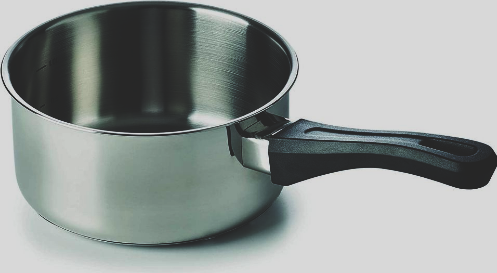By Fawzi SADALLAH
180
While you are probably heating the dish you have prepared few hours earlier for the “sohour” meal, specific to the sacred month of Ramadhan, remember that your kind and “très serviable” “casserona”, a word which is an algerian arabization of the French word “casserole”, is not a mere metallic deep and round container serving to heat or to boil or even to cook food, such as a “loubia shorba” (beans soup), a stew or a couscous. This vessel is, no doubt, far more important than you can imagine, thanks to its fabulous history of serving in kitchens of the world.
According to a number of western sources, “casserole” has been derived by the French from the Occitan “cassa”, which itself has been borrowed from the spanish language about at least 5 centuries ago. It is said also that “casserole”, as well as “cazuela”, are from the mozarab “cacherulo”. Moreover, these researchers put forward the idea of a greek origin of the term “cacherulo” deriving, according to them, from what ancient Greece called Kuathos (cup for the wine bowl) which has become in medieval latin “cattia”.
That is typically how its etymology is explained. But, to what extent is that true?
Mozarabs (Al Moustaâraboune/المستعربون) were Christians, mainly Spaniards, who lived under the rule of Muslims in Al-Andalus (muslim Spain and Portugal) between 711 and 1492. This Christian community has been, as the whole Iberian non Muslim population, thoroughly influenced by Arabic andalusi traditions and language, and constituted a kind of a bridge through which a great deal of Andalusi art of cooking and its terminology spread to the rest of Europe in Middle Ages.
Furthermore, we know that such influences were not limited to the western part of Dar Al-Islam (Islam home). Its eastern one played a decisive role too, although it took place in very violent and traumatic conditions. Thus, according to the American historian of food Mary Ellen Snowdgras, “Returning Crusaders (Assalibiyyoune Ndlr) brought from the Middle East various shapes and types of ewers (Al-Abariq) and cauldrons (Awani Attahye أواني الطهي) in copper, bronze, and iron, which European artisans began to copy and produce”. Consequently, Snowdgrass continues in her Encyclopedia of Kitchen History, “in Castelnaudray, France, during the siege of 1355, hungry townspeople rationed their food stocks in a centralized cauldron…”. Was the “casserole” among these imported “Islamic” vessels to Middle Ages Europe?
As, for its proximity with Christian nations of Europe, Al-Andalus connexion was the most probable direct channel of transmission of muslim traditions to Europe, Clifford A. Wright, the famous American historian of Mediterranean food, in his “Bake Until Bubbly: The Ultimate Casserole Cookbook” is strongly convinced after long historical investigations, that the French “casserole”, the Franco/Spanish “cazuela”, and the Occitan “cassa” which come from the mozarab “cacherulo”, as it is said above, has an Arabic/andalusi ancestor which is the word Gassâa (قصعة) which evolved on the Spanish tongue to cassa before spreading in other variants.
In France, Gassâa knew many transformations until it became “casse”, then “cassole” and sincre more than one century “casserole”. The British choose among these three words the second one: “cassole”.
If, one day, while reading The Anonymous Andalusian Cookbook written in Arabic by a Muslim andalusi during the era of Almohads, you will be surprised by the existence of the word الـ “قسولة” أو”كسولة” (qassola or cassola), do not panic, because it is normal: Muslims too had been influenced by Mozarabs colloquial language which contained plenty of Arabic terms submitted to Romance language rules spoken by this Christian community of Al Andalus.
By the way, Arabs have another term for the casserole, which, probably, is less popular nowadays. It is Al-Ttawa (الطَّاوة), which origin is Persian, and is still used even in the Indian subcontinent..
https://web.facebook.com/fawzi.sadallah





